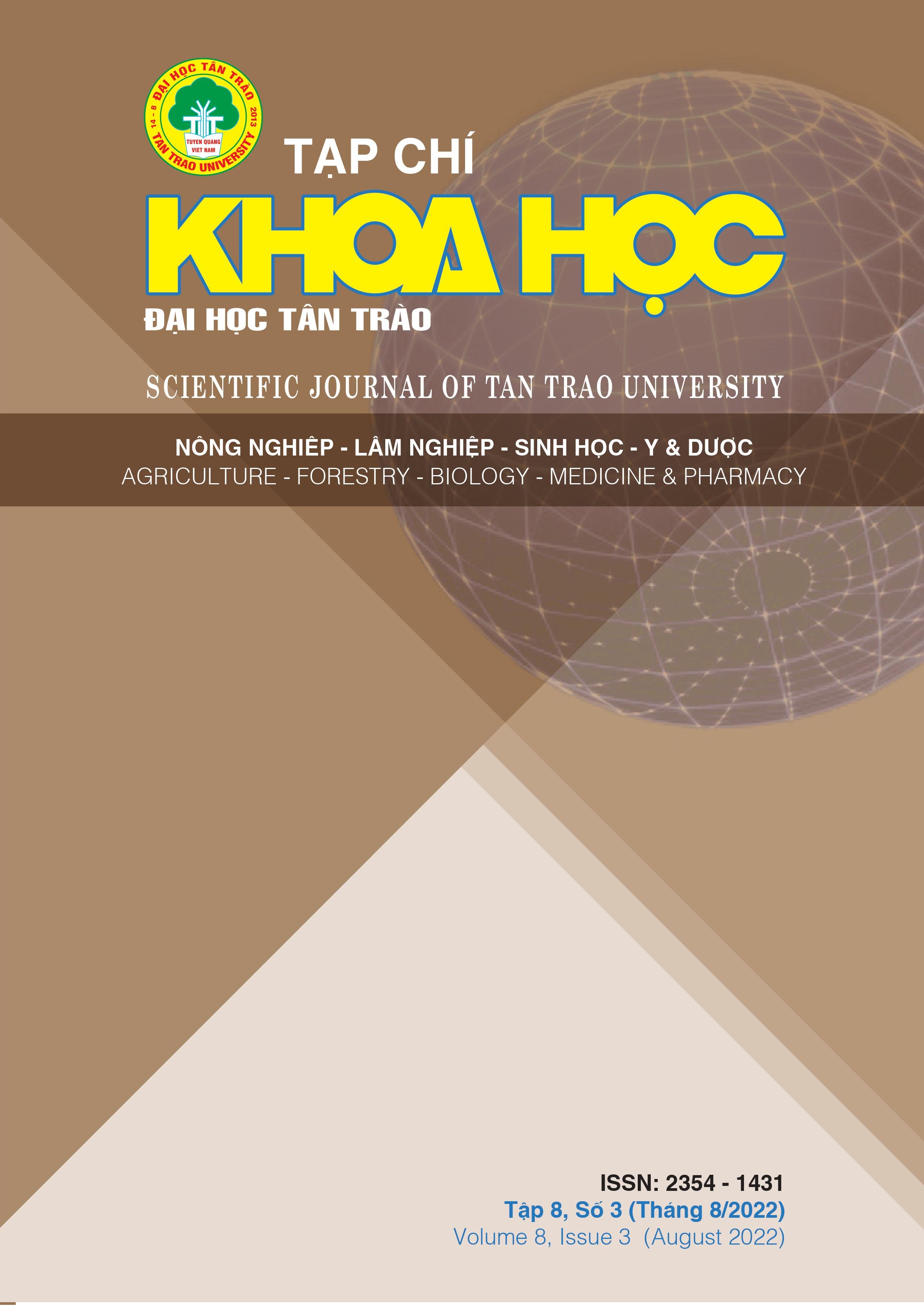DEVELOPMENT ECONOMICS FROM AGRO-FORESTRY MODELS IN DOAN HUNG DISTRICT, PHU THO PROVINCE
DOI:
https://doi.org/10.51453/2354-1431/2022/802Keywords:
Agro-forestry model, high-tech application, efficiency of the model, productivity, qualityAbstract
Research results show that in Doan Hung district, Phu Tho province, there are 4 agro-forestry models: Garden - Pond - Barn, Garden - Barn - Forest, Forest - Garden - Pond - Barn, and Garden – Forest. The total average annual income of the Garden - Pond - Stables model is 188.00 million VND/year; the equivalent of the Garden - Barn - Forest model is 123.50 million VND/year; Forest - Garden - Pond - Stables is 100.75 million VND/year and the Garden - Forest model is 117.25 million VND/year. Most of the models developed according to the principle of renovating the traditional model by transforming the structure of plants and animals, applying science and technology in cultivation and husbandry to achieve high economic and environmental values, improving land use efficiency, and improving and enhancing people's living standards. Some have become production models on sloping land that needs to be replicated and offered six solutions to develop sustainable agro-forestry models. The district has built a number of production models with high productivity, and good quality, towards clean agriculture, applying high technology and achieving remarkable results.
Downloads
References
[1]. Report "Summarizing the implementation of Resolution No. 26-NQ/TW dated August 5, 2008, of the 10th Party Central Committee on agriculture, farmers and rural areas" Doan Hung District People's Committee June 2021
[2]. Nguyen Ngoc Binh, 1985, Summary of existing experiences and research to build new models of agroforestry for each region, Report on topic 04A 02 09, Forestry Institute, 1985. 38 pages.
[3]. Nguyen Van Chuong, 1985, Creating models of agroforestry, Agriculture Publishing House, Hanoi, 1985.
[4]. Dang Kim Vui et al., 2007, Textbook of agroforestry, Agriculture Publishing House, Hanoi 2007, 147 pp.
Downloads
Published
How to Cite
Issue
Section
License

This work is licensed under a Creative Commons Attribution-ShareAlike 4.0 International License.
All articles published in SJTTU are licensed under a Creative Commons Attribution-ShareAlike 4.0 International (CC BY-SA) license. This means anyone is free to copy, transform, or redistribute articles for any lawful purpose in any medium, provided they give appropriate attribution to the original author(s) and SJTTU, link to the license, indicate if changes were made, and redistribute any derivative work under the same license.
Copyright on articles is retained by the respective author(s), without restrictions. A non-exclusive license is granted to SJTTU to publish the article and identify itself as its original publisher, along with the commercial right to include the article in a hardcopy issue for sale to libraries and individuals.
Although the conditions of the CC BY-SA license don't apply to authors (as the copyright holder of your article, you have no restrictions on your rights), by submitting to SJTTU, authors recognize the rights of readers, and must grant any third party the right to use their article to the extent provided by the license.


